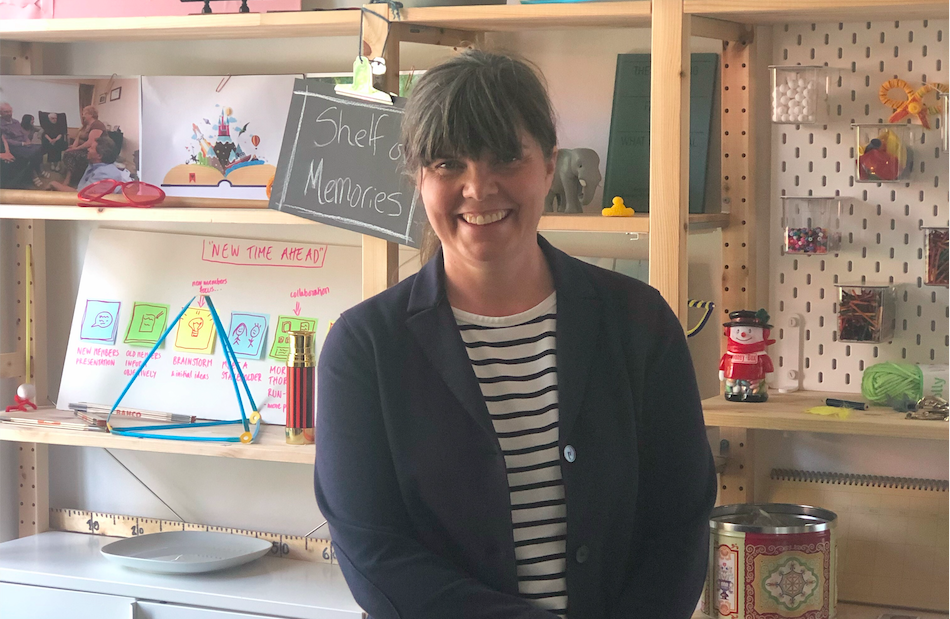Learnings from seven semesters with Openlab’s master course
Through unleashing the creativity inside and taking a user-centric approach we can see our competence in a new light. Students at Openlab’s master course “Challenges for Emerging Cities” tackle challenges given by the public sector. Magdalena Holdar has been with us as at Openlab for seven semesters teaching and coaching the students in our master course. She is now moving on to new challenges and this is her last semester at Openlab.

Her way of teaching at Stockholm University has been heavily influenced by the methods used in the master’s course where design thinking is central. She incorporates more lab based methods in her courses at Stockholm University.
– I try to teach art history in ways that activate the doing and practical part despite of it being an academic field. I think you learn better that way.
Has the way of working in academia changed over the past four years?
– I’m really interested in university pedagogy and a lot of research shows that lectures are among the least productive ways of teaching. People in all disciplines are trying to find new methods to change the traditional classroom teaching. Nowadays it’s more about doing things, prepare for seminars through watching movies or performing different activities. Research shows that students will learn better if the classroom is more of a laboratory environment. I think higher education can learn a lot by looking at how we work in this course.
Magdalena describes herself and her three fellow teacher colleagues as people who want to explore this laboratory approach in a smaller-scale with smaller classes and in the long run influence the way the courses are structured at their home universities.
– The transformation the students go through during the semester is extraordinary, if you compare them from day one to the last day of the course. The most noticeable thing is how everyone understands that their competence is valuable even within an area this is out of their comfort zone.
In multidisciplinary team, the learning curve is steep because the students take charge over the challenge and the situation and they make use of all their previous knowledge and experiences.
What are some main takeaways after teaching this course?
That the problem is never what you think it is when you start, and in the process it always turns out to be something else. Also, that it’s meaningless to not talk to the stakeholders who are affected by the problem.
What are some key learnings for the challenge givers from public sector?
The challenge givers don’t have the full picture and our students approach the challenge from a completely different angle. The solutions our students come up with aren’t dependent on existing hierarchies, personal agendas, loyalties, people who don’t get along or other problems that can confuse and aggravate the challenge. The students don’t see these structures in the same way as the challenge givers which means that they’re free to find way more constructive solutions.
Magdalena says that the greatest misconception about this course is that the main challenge is to learn the method design thinking. But as it turns out, it’s always the team work that is the greatest challenge. This course is just as much about working in teams as it is about design thinking.
What are the students bringing with them after the course?
That design thinking as a model is applicable almost everywhere. They can apply it in how they write their master thesis, in their research or how they relate to their work. You change your relation to the thing you were doing before and the things you’ll be doing in the future because working so intensely with design thinking and the given challenge over the course of 20 weeks will shift your mindset. And for us coaches, it has changed our pedagogical mindset. Also that the students understand that they’re capable of developing a sometimes quite advanced product or service.
Who should take this course?
You have to be open, brave and curious. So far, all our students have been that. You should dare to present, talk and interact with people. But also trust that other people are doing their job. Taking the course is a great way to discover how much you actually already know, things that are not related to what you’ve been studying. All skills are needed.
Where is academia heading in the future?
I hope that academia will be even more open to differences than it is today. I hope it’ll be more diverse. And that’s a fantastic thing with this course – there are so many different nationalities among the students thanks to KI and KTH who have collaborations with other universities abroad. It’s the most varied group of students I’ve ever worked with and I hope that it will be like that in all Swedish universities in the years to come.
And where are you heading next?
I’m developing a master’s program in curating that I’m already working with that has been the same for a long time. Now we want to reboot the program to get a wider reach and also highlight the research we and our students do. We are also formalizing our collaborations with international actors. The experience from Openlab is really valuable and will make me work more consciously. The whole access to Openlab as a community is something I will miss. There’s so much curiosity in the building and the students feel like they’re a part of this place. It’s a completely different way of studying and teaching.
Read more about the course here.
By: Elise Johanson, elise.johanson@openlab.se